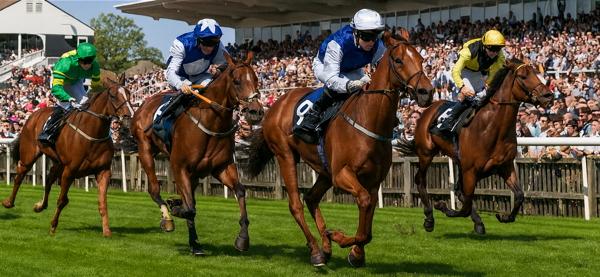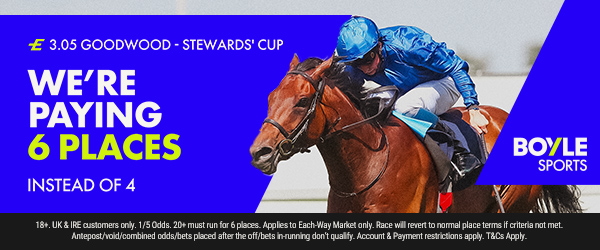 |
RacingBetter News |
| Monday 29th September 2025 | |
The Evolution of Horse Racing Betting

Betting on a horse race can really dial up the excitement you experience when watching the runners battle for victory. The adrenaline rush reaches its apex when the runners thunder down the home straight, and seeing your horse triumph is always exhilarating.
It’s why horse racing has always had two constants: fast horses and people willing to bet on them. The evolution of horse racing betting is fascinating, from gentleman’s wagers in the 17th century to the current crop of slick mobile apps. Let’s take a canter through this evolution and examine the current state of play.
The Early Years
Horse racing was popular among many ancient civilisations. Archaeological records show that races were staged in Ancient Greece, Rome, Babylon, Syria, Arabia and Egypt.
Humans have always loved a cheeky flutter, as it activates the brain’s reward system and releases dopamine. As such, we’re confident that the spectators in ancient times were staking drachmas, gold coins and sacks of barley on the outcome of each race.
However, the practice of betting on horse races only became commonplace in the 17th century, when King Charles II was on the throne. Horse racing emerged as a favourite pastime of the nobility, as kings, princes, dukes and wealthy landowners converged upon Newmarket and Ascot to race their horses.
Spectators would get in on the action, placing bets between themselves. At first, betting was informal and unregulated. If someone welched on a wager, the only recourse might be angry words over a tankard of ale in a local inn, or in the worst cases, a duel.
The Rise of the Trackside Bookies
In 1750, the Jockey Club was established to control racing at Newmarket. This organisation aimed to fight corruption and create a level playing field for owners, trainers, jockeys and punters.
At this point, professional bookmakers muscled their way in. These colourful characters set up shop at English racecourses, with satchels slung over their shoulders and chalkboards under their arms, and they called out the odds in booming voices.
However, it was essentially a Wild West. The bookies weren’t licensed, disputes were common, and these flamboyant characters would often vanish without a trace if they sustained heavy losses. It was hard to keep track of who owed what, and you had to trust that the bookie with the loudest voice and the largest moustache would pay up when your horse romped to victory.
The Tote Arrives
Despite the chaos, horse racing soared in popularity, and betting skyrocketed. The so-called “sport of kings” united dukes and dockers, princes and paupers, who all lined up trackside in a bid to roar their runners to victory.
Eventually, the UK government stepped in and tried to bring some order to proceedings. Lawmakers established the Tote after passing the Racecourse Betting Act in 1928.
This state-run betting pool was designed to provide a fairer alternative to shady bookmakers at racetracks.
The Tote, which is still popular today, follows a pari-mutuel system: all the money staked on a race goes into a pool, the industry takes a small cut, and the rest is divided between punters with winning tickets.
High Street Betting is Legalised
Betting off the track was illegal for centuries, but that didn’t stop anyone. Illicit gambling dens were rife, and the underground economy was vibrant.
Everything changed in 1960, when the government passed the Betting and Gaming Act. That law allowed companies to set up high street betting shops for the first time. The first shops opened for business in May 1961, and they soon became a fixture of town centres across the country.
At its peak, the UK had more than 16,000 betting shops. At first, they were deliberately grim, smoky dens with frosted windows and no chairs. However, they evolved over the years, adding TVs, comfortable seating, coffee machines, sports betting terminals and even virtual roulette machines.
The Digital Revolution
The next great leap forward occurred in the late 1990s, when the first online bookmakers launched. Suddenly, you didn’t have to nip down to the bookies or head to the course to bet on the gee-gees.
Punters could simply visit a website, click a few buttons and place bets on racing from around the world – the UK, Ireland, the US, Australia, France, South Africa, Japan and various other countries.
High street bookmakers like William Hill, Ladbrokes and Coral set up sites, before purely digital players like Bet365 muscled their way in. Then there was Betfair, founded in 2000, which bypassed the need for bookies. Punters could simply bet against one another at this popular exchange, setting their own odds, backing horses to win and “laying” horses to lose.
With the rise of smartphones, betting on horse races became a 24/7 activity. Punters could be lounging on the sofa, travelling to work or sitting in a pub, and they could simply tap their phone screens a few times to place their bets.
Virtual Horse Racing
Another evolutionary step occurred in 2002, when a company called Inspired Broadcast Networks rolled out the first virtual horse races. Punters could bet on the action at two virtual tracks: Portman Park and Steeple Downs.
In the first year, bookmakers turned over around £300 million on these virtual horse races, according to The Guardian. They’ve grown increasingly sophisticated in the ensuing years, and you’ll now find a wealth of virtual horse racing betting options at the best online bookmakers.
For instance, you can bet on the race winner, place each-way bets or delve into more exotic markets, such as forecasts and tricasts. Before placing your bet, you can browse detailed past performance data on each runner.
You’ll then be able to watch the action unfold on your phone, tablet or computer. The latest virtual horse racing games feature slick animations, high-definition graphics and realistic commentary. There’s a race going off every two or three minutes – 24/7, 365 days a year.
The Current State of Play
All of these forms of horse racing betting now peacefully coexist. You can head to a racetrack and soak up the energy of the betting ring. Alternatively, pop into your local bookmaker to place a bet on the 3.15 at Kempton. Or simply pick up your phone, sign into a betting app and tap the screen a couple of times to place a cheeky flutter on a real race or a virtual event.
From whispered wagers in taverns to slick apps streaming races from around the world in high-definition, horse racing betting has evolved with the times. But the thrill remains the same, regardless of how you place your bet. It’s that electric moment when the horses charge down the straight, and your hopes ride on the runner you’ve backed.
Online bookmakers now offer thousands of casino games, and they take bets on everything from Premier League games to whether it will snow at Christmas. Yet nothing can match the excitement of betting on a horse race, so the industry continues to grow at a rapid pace, suggesting a bright future.







